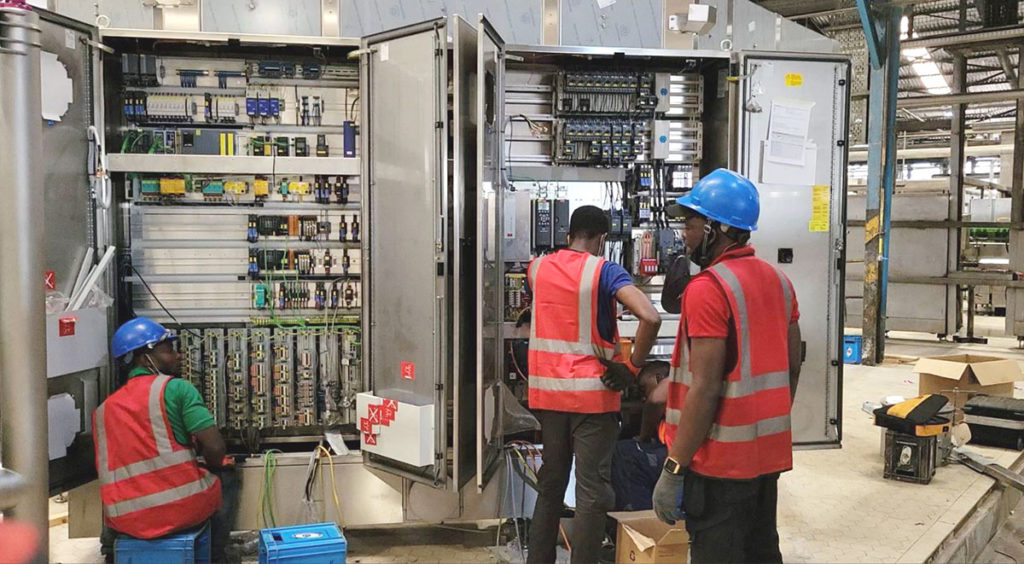Electrical panel commissioning is a critical step in ensuring the safety, functionality, and efficiency of electrical systems in residential, commercial, and industrial settings. Proper commissioning ensures that the electrical panels meet design specifications and regulatory standards. Here is a comprehensive checklist to guide you through the process of testing and commissioning electrical panels, ensuring a seamless and safe installation.
1. Pre-Installation Preparation
Before beginning the actual installation and commissioning, it’s essential to carry out thorough pre-installation preparations. This step involves several key activities:
a. Site Assessment
- Evaluate the Installation Site: Conduct a detailed assessment of the site to identify potential hazards and ensure the environment is suitable for electrical panel installation.
- Verify Compliance: Ensure the site complies with local electrical codes and standards.
b. Documentation Review
- Check Design Documents: Review electrical schematics, single-line diagrams, and panel design documents to ensure accuracy.
- Manufacturer’s Instructions: Familiarize yourself with the manufacturer’s installation and commissioning guidelines.
c. Material Inspection
- Inspect Components: Examine all components, including circuit breakers, busbars, and wiring, for damage or defects.
- Inventory Check: Verify that all necessary materials and tools are available on-site.
2. Installation Procedures
Proper installation is crucial for the performance and longevity of electrical panels. Follow these steps to ensure a successful installation:
a. Mounting the Panel
- Secure Mounting: Ensure the electrical panel is mounted securely and level on the wall or support structure.
- Adequate Ventilation: Verify that the panel is installed in a location with adequate ventilation to prevent overheating.
b. Wiring and Connections
- Proper Wiring: Follow the wiring diagram meticulously, ensuring all connections are secure and correctly placed.
- Labeling: Clearly label all wires and breakers to facilitate future maintenance and troubleshooting.
c. Grounding
- Ensure Proper Grounding: Connect the panel to a reliable grounding system to protect against electrical faults and surges.
3. Initial Testing
Once the panel is installed, initial testing is necessary to identify and rectify any issues before commissioning.
a. Visual Inspection
- Inspect Connections: Check all connections for tightness and proper insulation.
- Component Check: Ensure all components, such as breakers and fuses, are correctly installed and functional.
b. Continuity Testing
- Check Continuity: Use a multimeter to verify the continuity of all circuits and connections within the panel.
c. Insulation Resistance Testing
- Insulation Test: Perform insulation resistance tests on all cables and components to ensure there are no insulation faults.
4. Functional Testing
Functional testing is a critical part of the commissioning process, ensuring that the panel operates correctly under normal and fault conditions.
a. Operational Checks
- Circuit Breaker Testing: Test each circuit breaker to ensure it operates correctly and trips at the appropriate settings.
- Load Testing: Apply a simulated load to the panel to verify that it can handle the expected operational load.
b. Protection System Testing
- Test Protection Relays: Verify that all protection relays function correctly and provide the necessary protection.
- Ground Fault Testing: Check for proper operation of ground fault protection devices.
5. Final Commissioning
The final commissioning stage involves thorough documentation and verification to ensure the panel is ready for operation.
a. Documentation
- Record Test Results: Document all test results, including insulation resistance, continuity, and functional tests.
- Update Schematics: Ensure that as-built schematics and diagrams reflect any changes made during installation.
b. Compliance Verification
- Regulatory Compliance: Verify that the installation meets all local and national electrical codes and standards.
- Manufacturer’s Guidelines: Ensure all commissioning activities adhere to the manufacturer’s guidelines.
c. Client Handover
- Client Training: Provide training to the client on the operation and maintenance of the electrical panel.
- Handover Documentation: Supply the client with all relevant documentation, including test results and maintenance manuals.
Conclusion
Adhering to this comprehensive checklist for testing and commissioning electrical panels ensures that your installation is safe, reliable, and compliant with industry standards. Each step, from pre-installation preparation to final commissioning, plays a vital role in the overall success of the project. By following these guidelines, you can avoid potential issues and guarantee the optimal performance of your electrical systems.
For professional assistance with electrical panel commissioning, visit Manikaran. Our expert team provides comprehensive services to ensure your electrical panels are installed, tested, and commissioned to the highest standards.

